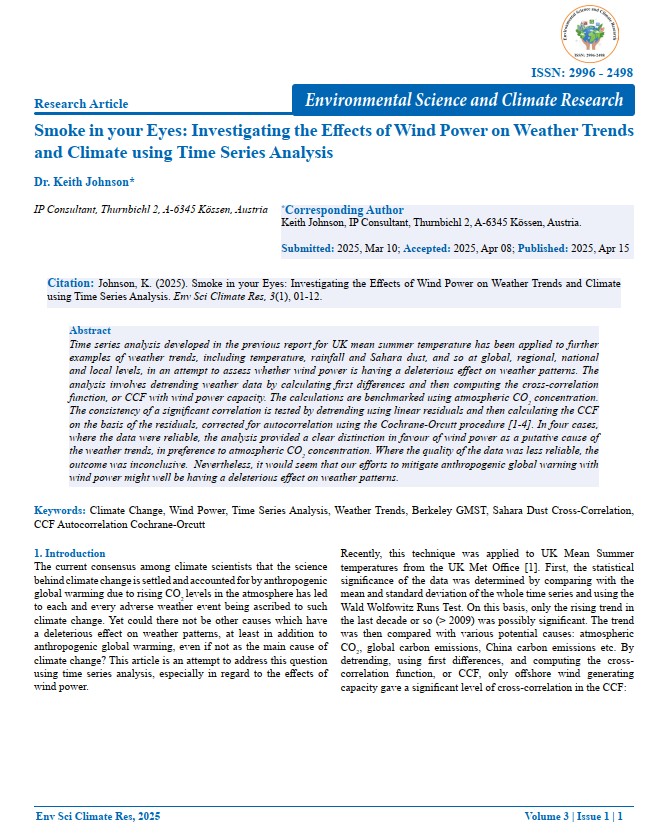Below you will find selected scientific publications for study and information.
The articles are sorted by date. Click to download.
Environmental Science and Climate Research (04 - 2025), ISSN: 2996 - 2498 - Dr. Keith Johnson
Smoke in your Eyes: Investigating the Effects of Wind Power onWeather Trends and Climate using Time Series Analysis
Abstract:
Time series analysis developed in the previous report for UK mean summer temperature has been applied to further examples of weather trends, including temperature, rainfall and Sahara dust, and so at global, regional, national and local levels, in an attempt to assess whether wind power is having a deleterious effect on weather patterns. The analysis involves detrending weather data by calculating first differences and then computing the cross-correlation function, or CCF with wind power capacity. The calculations are benchmarked using atmospheric CO2 concentration.
The consistency of a significant correlation is tested by detrending using linear residuals and then calculating the CCF on the basis of the residuals, corrected for autocorrelation using the Cochrane-Orcutt procedure [1-4]. In four cases, where the data were reliable, the analysis provided a clear distinction in favour of wind power as a putative cause of the weather trends, in preference to atmospheric CO2 concentration. Where the quality of the data was less reliable, the outcome was inconclusive. Nevertheless, it would seem that our efforts to mitigate anthropogenic global warning with wind power might well be having a deleterious effect on weather patterns.
International journal of research in physical chemistry and chemical physics, published June 6, 2024
The role of greenhouse gases in radiative equilibrium – Thermodynamic evaluation
Abstract:
The significance of greenhouse gases for climate change is assessed in the case of carbon dioxide on the basis of thermodynamic data. According to the values of the molar heat capacity, no increased heat-storing property of this greenhouse gas can be determined. The absorption and desorption of infrared radiation by the greenhouse gases is seen as a reversible dynamic process, which on the one hand
reduces the IR radiation from the Sun, and on the other hand, delays the re-radiation from the Earth. As converters of heat into IR photons and vice versa, the greenhouse gases play an important role in balancing the radiation. The direction of heat transport in the atmosphere is determined by the 2nd Law of Thermodynamics. The range of IR radiation is determined according to the gradation of air pressure in the
atmosphere.

 DE
DE  EN
EN 